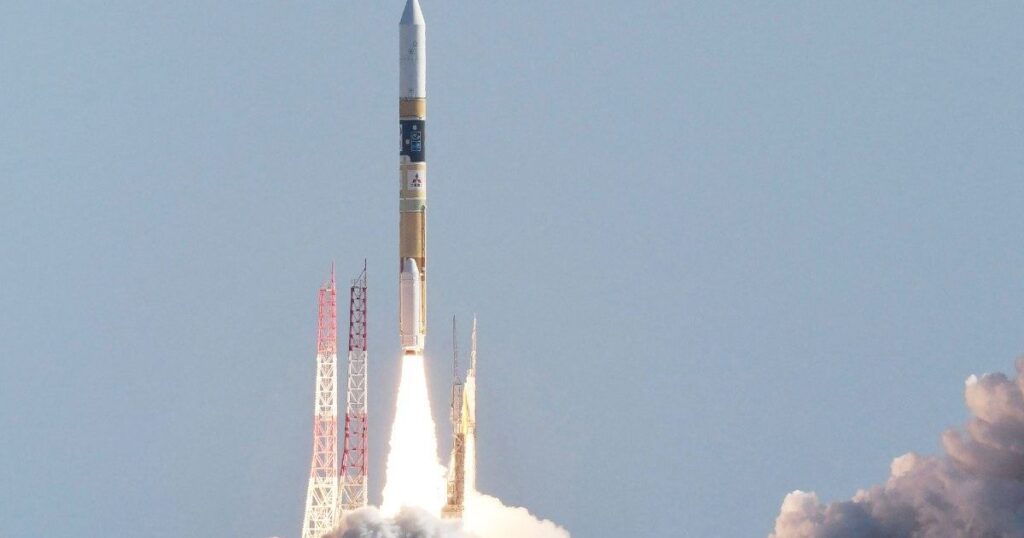A profitable landing will make Japan the fifth nation to ever land a spacecraft on the moon.
Japan is making an attempt to land its high-precision ‘Moon Sniper’ probe on the lunar floor and can turn out to be solely the fifth nation to land a spacecraft on the moon – if all goes in line with plan.
The Japan Aerospace Exploration Company (JAXA) is hoping for a precision touchdown of its Good Lander for Investigating Moon (SLIM) probe inside 100 meters (328 toes) of the designated goal, a know-how it calls unprecedented and essential to advancing lunar exploration. particularly within the seek for lunar water and the potential for human habitation.
SLIM, nicknamed the Moon Sniper, will launch a 20-minute landing part from midnight on Saturday (3:00 PM GMT on Friday) throughout its single mission, making an attempt to land at a goal location roughly the dimensions of two working tracks on the slope from a crater simply south of the lunar equator.
“No different nation has achieved this. Proving that Japan has this know-how would give us an enormous benefit in upcoming worldwide missions similar to Artemis,” stated Shinichiro Sakai, SLIM venture supervisor of JAXA, referring to the US area company NASA’s manned moon mission.

Japan has actively sought to increase its position in area actions, forging partnerships with america to deal with China’s rising army and technological affect, even into the area area.
Solely 4 nations have efficiently landed on the moon: India, China, the US and Russia.
Japan is actively taking part in NASA’s Artemis program with the purpose of sending one among its astronauts to the moon.
Nevertheless, JAXA has suffered a number of setbacks, together with a failed launch in March of its new H3 flagship rocket, which was supposed to cost-competitively rival industrial rocket suppliers like SpaceX.
In August, India’s Chandrayaan-3 made a historic touchdown on the moon’s south pole, a significant technological achievement given the rugged terrain, underscoring the nation’s emergence as a significant participant in area.
JAXA has emphasised that its high-precision know-how will turn out to be a strong device in future explorations of hilly lunar poles, that are seen as a possible supply of oxygen, gas and water. Japan can also be planning a joint unmanned polar exploration with India in 2025.
The Japanese company has landed on small asteroids twice, however a moon touchdown is rather more tough resulting from gravity, as proven by plenty of latest failures.
Final 12 months, a probe from Japanese startup ispace Inc crashed onto the moon’s floor, and Russia’s Luna 25 adopted go well with.
A lander from the American startup Astrobotic Know-how suffered a gas leak final week, forcing it to desert a touchdown try.
JAXA says it’s going to take a month to confirm whether or not SLIM achieved its high-precision post-touchdown targets.
Star Wars-like probe on board
Aboard Japan’s Moon Sniper spacecraft is a small robotic with an enormous mission: unfold like a Transformer toy, wiggle throughout the moon’s floor and ship pictures again to Earth.
The form-shifting SORA-Q probe – co-developed by a significant toy firm – has been in comparison with a pleasant Star Wars droid and a sea turtle for the best way its steel kind can navigate the dusty moonscape.
Sora means ‘universe’ in Japanese, whereas ‘Q’ refers back to the phrases ‘query’ and ‘quest’, the makers say.
Barely bigger than a tennis ball and as heavy as a big potato – eight centimeters in diameter and 250 grams (half a pound) – SORA-Q was designed by JAXA in collaboration with Takara Tomy, the toy firm behind the unique 1984 Transformers.
If the mission is profitable, the probe’s cameras will seize worthwhile pictures of a crater the place components of the moon’s mantle, normally hidden deep beneath the crust, are believed to be seen.


